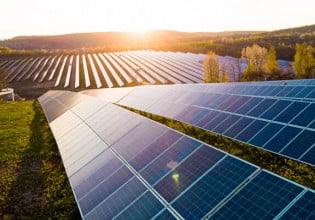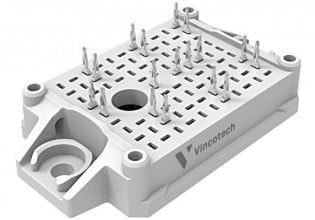Printed-plastic solar technology is transforming how and where we harvest power. It represents the newest generation of technologies in solar power generation which will result in flexible, low weight, and low cost panels. Europe has recently launched a four-year, Euro 14.2M effort to develop advanced flexible plastic solar panels designed to be integrated into new consumer mobile applications and buildings. Led by the CSEM, the project consortium includes industrial partners such as Agfa, BASF, and DuPont Teijin Films as well as the photovoltaic specialist Konarka and key European research institutes and universities.
Imagine a world where electric power is safe, truly green, and produced locally. The launch of SUNFLOWER, a Euro 14.2M project created to generate solar energy with highly efficient and recyclable printed plastic solar cells, brings us a step closer to the dream of environmentally friendly and efficient power for everyone. Printed plastic solar cells are the most recent generation of solar panels and are currently limited by their relatively low efficiency and lifetime. However, they can be mass produced using large scale printing machines on rolls of flexible materials, unlike the rigid, silicon-based panels in use today. With the CSEM-led project SUNFLOWER, the 17 consortium partners are aiming to simultaneously increase the cells’ efficiency and lifetime while decreasing production costs through environmentally friendly technologies surpassing current solar science.
Flexibility, low weight, and low cost are the key advantages of printed plastic solar panels. They will enable the development of consumer applications like roll-up solar panels or panels integrated three-dimensionally into architectural structures and eventually make possible more economical and robust solar-panel fields for energy production farms. This is a key opportunity for the EU to further expand its innovation base in alternative energies. "We have the chance to develop a technology that is ideally suited to manufacturing in the EU due to its high level of automation, need for highly trained personnel, low energy consumption, and close proximity to suppliers and markets", states project coordinator Dr. Giovanni Nisato from CSEM.
The project consortium combines industrial, institutional, and academic support to make a significant international impact while researching market-relevant implementations. The industrial project partners are well positioned along the supply chain of future products based on printed plastic solar cells, which is an important prerequisite for the creation of a substantial socio-economic footprint for this project.
More news and information regarding the latest developments in Smart Grid electronics can be found at Darnell’s SmartGridElectronics.Net.






